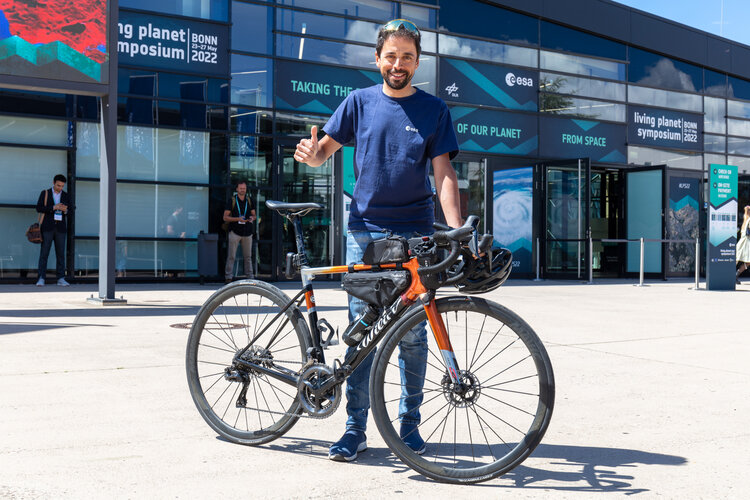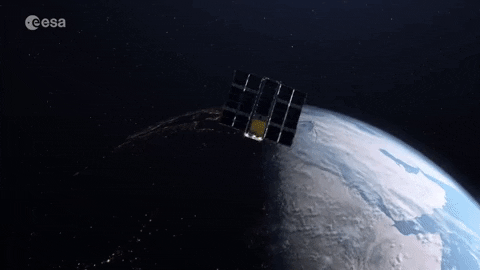
Copernical Team
SpaceX's Transporter 5 launches with remains of 47 people for 'space burial'
 SpaceX launched its 22nd rocket of the year on Wednesday, the Transporter-5 rideshare mission, which included carrying 47 people's cremated remains for a burial in space.
The send off, designed by the company Celestis, marks the 18th time the company has launched space burial flights - which have increased in recent years at least partially because of commercial space companies like SpaceX
SpaceX launched its 22nd rocket of the year on Wednesday, the Transporter-5 rideshare mission, which included carrying 47 people's cremated remains for a burial in space.
The send off, designed by the company Celestis, marks the 18th time the company has launched space burial flights - which have increased in recent years at least partially because of commercial space companies like SpaceX NASA, Boeing complete Starliner uncrewed flight test to ISS
 NASA and Boeing safely landed the company's CST-100 Starliner spacecraft Wednesday in the desert of the western United States, completing the uncrewed Orbital Flight Test-2 (OFT-2) to the International Space Station to help prove the system is ready to fly astronauts.
About four hours after departing the space station, Starliner touched down onto its airbags at 4:49 p.m. MDT, wrapping up t
NASA and Boeing safely landed the company's CST-100 Starliner spacecraft Wednesday in the desert of the western United States, completing the uncrewed Orbital Flight Test-2 (OFT-2) to the International Space Station to help prove the system is ready to fly astronauts.
About four hours after departing the space station, Starliner touched down onto its airbags at 4:49 p.m. MDT, wrapping up t Boeing capsule lands back on Earth after space shakedown

Boeing's crew taxi returned to Earth from the International Space Station on Wednesday, completing a repeat test flight before NASA astronauts climb aboard.
It was a quick trip back: The Starliner capsule parachuted into the New Mexico desert just four hours after leaving the orbiting lab, with airbags attached to cushion the landing. Only a mannequin was buckled in.
Aside from thruster failures and cooling system snags, Starliner appeared to clinch its high-stakes shakedown cruise, 2 1/2 years after its botched first try. Flight controllers in Houston applauded and cheered the bull's-eye touchdown.
"It's great to have this incredible test flight behind us," said Steve Stich, director of NASA's commercial crew program. He described the demo as "extremely successful," with all objectives met.
What can satellites reveal about climate tipping points?

The effects of our warming climate are seen across a multitude of measures, usually as incremental changes: more frequent extreme weather, heatwaves, droughts and wildfires. The cumulative impact of these changes, however, can cause fundamental parts of the Earth system to change more quickly and drastically. These ‘tipping points’ are thresholds where a tiny change pushes the system into an entirely new state.
This week, at ESA’s Living Planet Symposium, scientists came together to discuss the latest research evidence for climate tipping points and identify the opportunities and challenges of using remote sensing data to understand them.
Boeing Starliner completes key test mission to ISS, with some hiccups
 Boeing's Starliner capsule returned to Earth Wednesday in the final step of a key uncrewed test flight to prove itself worthy of providing rides for NASA astronauts to the International Space Station.
The spaceship landed in a puff of sand at 4:49 pm local time (2249 GMT) in the New Mexico desert, wrapping up a six-day mission crucial to restoring Boeing's reputation after past failures.
Boeing's Starliner capsule returned to Earth Wednesday in the final step of a key uncrewed test flight to prove itself worthy of providing rides for NASA astronauts to the International Space Station.
The spaceship landed in a puff of sand at 4:49 pm local time (2249 GMT) in the New Mexico desert, wrapping up a six-day mission crucial to restoring Boeing's reputation after past failures. Spacesuits are leaking water and NASA is holding off any spacewalks until they can solve the problem

NASA's spacesuits are getting old. The extra-vehicular mobility units—EMUs for short—were designed and built for spacewalks outside NASA's space shuttles, which flew for the last time in 2011. Nowadays, the EMUs are an integral part of maintaining and upgrading the International Space Station (ISS) exterior, providing the crew with the ability to live and work in the vacuum of space for extended periods of time (spacewalks regularly last from 6 to 8 hours). However, at the end of the most recent spacewalk on March 23, NASA astronaut Kayla Barron discovered water in the helmet of German astronaut Matthias Maurer while she helped him remove the suit.
From Rome to Bonn by bike
 Image:
Omar Di Felice, an extreme cyclist, has biked from Rome to Bonn to take part at ESA’s Living Planet Symposium. Tune in today at 15:30 live from Bonn on ESA Earth Observation Instagram as he’s joined by ESA Astronaut Luca Parmitano and ESA CryoSat Mission Geophysicist Alessandro di Bella.
Image:
Omar Di Felice, an extreme cyclist, has biked from Rome to Bonn to take part at ESA’s Living Planet Symposium. Tune in today at 15:30 live from Bonn on ESA Earth Observation Instagram as he’s joined by ESA Astronaut Luca Parmitano and ESA CryoSat Mission Geophysicist Alessandro di Bella. Historic Greenland ice sheet rainfall unravelled

For the first time ever recorded, in the late summer of 2021, rain fell on the high central region of the Greenland ice sheet. This extraordinary event was followed by the surface snow and ice melting rapidly. Researchers now understand exactly what went on in those fateful summer days and what we can learn from it.
Teach an Earth-observing satellite to know what it sees

For decades now Earth observation satellites have been monitoring our ever-changing home planet; the next step is to enable them to recognise what they see. The latest public challenge for the machine learning community from ESA’s Advanced Concepts Team is to train satellite software to identify features within the images it acquires – with the winning team getting the unique opportunity to load their solution to ESA's OPS-SAT nanosatellite and test it in orbit.
The chaotic early phase of the solar system
 Before the Earth and other planets formed, the young sun was still surrounded by cosmic gas and dust. Over the millennia, rock fragments of various sizes formed from the dust. Many of these became building blocks for the later planets. Others did not become part of a planet and still orbit the sun today, for example as asteroids in the asteroid belt.
Researchers from ETH Zurich and the N
Before the Earth and other planets formed, the young sun was still surrounded by cosmic gas and dust. Over the millennia, rock fragments of various sizes formed from the dust. Many of these became building blocks for the later planets. Others did not become part of a planet and still orbit the sun today, for example as asteroids in the asteroid belt.
Researchers from ETH Zurich and the N 